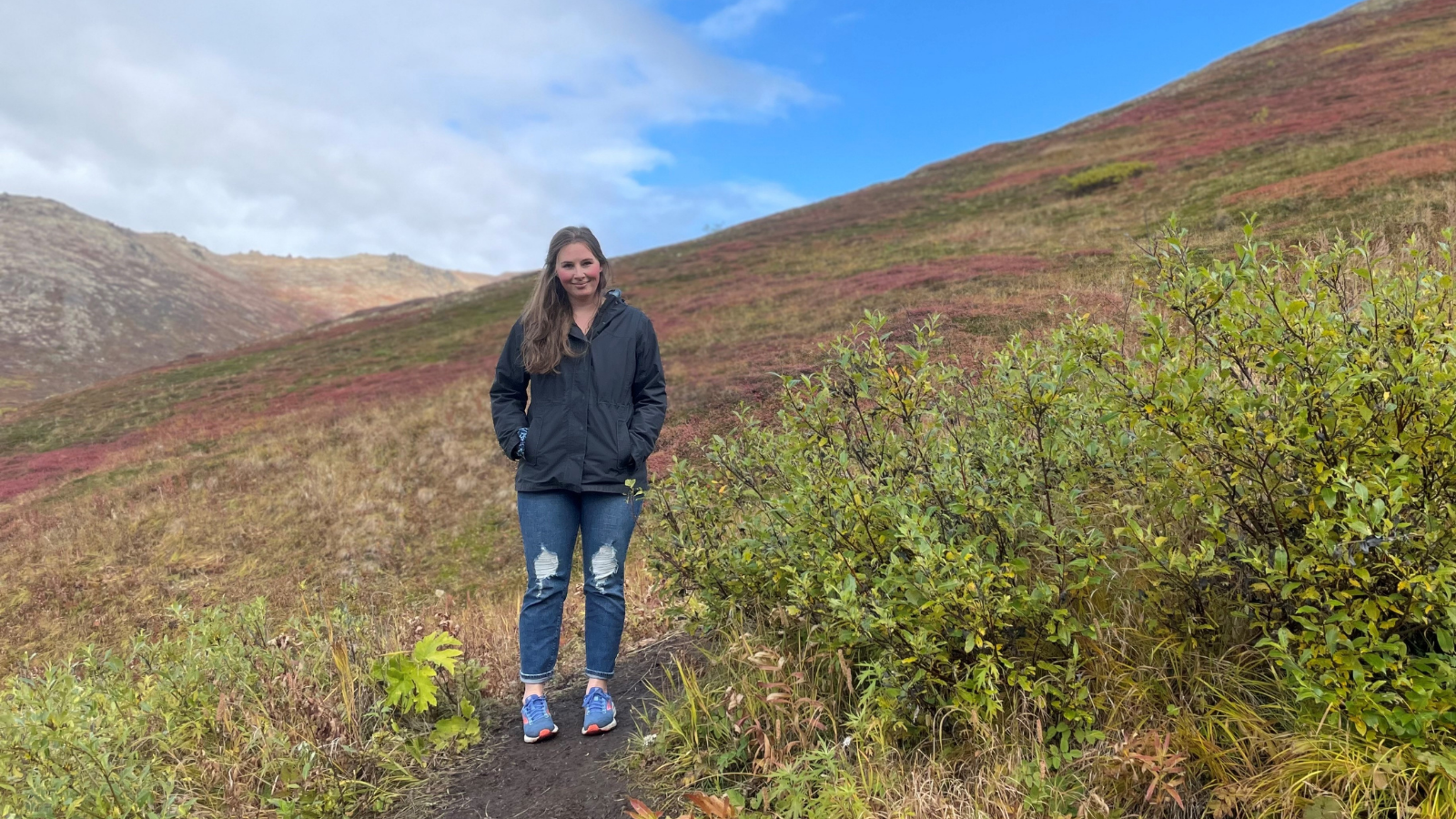
Meet Environment America’s new Alaska organizer: Dyani Chapman
Environment America's new Alaska organizer is taking her experience working with Environment America's members on a variety of campaigns to Alaska. Read more about why she decided to move from Colorado to Alaska and what she'll be working on.

I grew up in the woods of the Rocky Mountains in Colorado. I spent my whole childhood outside- hiking, fishing, camping. My parents were environmentalists in a very anti-establishment style. The house I grew up in was solar powered and totally off the grid. We didn’t drive cars on holidays. My family ate organic food and thrifted our clothes before it was trendy. I became a staunch environmentalist early in life. I always took this to mean I would spend a lot of time with what I loved. I studied Biology with a Behavior Specialization at Boston University and fully intended on becoming a naturalist researcher, watching gorillas (my plan at 6), or elephants (my plan at 17), or wolves (my plan at 19) in the wild. However, each year it became more and more apparent that all the species I loved best were at risk of going extinct unless we dramatically shifted the way we interacted with the world. And it wasn’t knowledge holding us back. Post college I looked for organizing positions. In February of 2016 I began work with the Fund for the Public Interest running a canvass office that added members, fundraised, and built support for campaigns run by Environment New Mexico (Environment America’s New Mexico office) and NMPIRG. We built a big team of young political activists and talked to almost one in every twenty households in the state about a variety of environmental and public health issues. The members we recruited then provided key backing to get New Mexico’s commitment to 100% carbon free electricity into law. I went on to be a regional director with the canvass team, providing the support and guidance for directors to run successful canvass offices throughout the Western U.S fighting for plastic reduction legislation, dam removal in Eastern Washington, stopping irresponsible pesticide use, better transportation, and more.
My older brother has lived in Alaska for the last several years working as a river guide, tug boat deckhand, and more recently as a captain of a touring boat. He’s been bugging me to move to Alaska for awhile, and last spring he sweetened the invite with a new baby on the way. After five years running and overseeing door to door canvasses, I was ready to start a new project to protect our environment. Environment America wanted to expand our on the ground organizing in Alaska. Fortunately, the two came together and so this autumn, I’m starting a new project for Environment America, and getting to be an in-person auntie.
We all know our world is facing a mounting environmental crisis, and Alaska’s view is from the front row. It will cost over $100 million to clean up the marine debris littering the Alaskan shore; one clean up project is attempting to tackle a stretch of shore with over 30 tons of debris per mile, and that stretch is not accessible by land vehicles. Chemicals in plastic are beginning to bioaccumulate as big fish eat small fish that eat plastic, and eventually, this problem will impact salmon. Alaska’s glaciers are retreating about 115 feet per year, which is one of the fastest rates in the world. Fires are getting worse as well, like in much of the western U.S. In 2019, over 2.5 million acres burned. Some of the most iconic vulnerable species in the world like the polar bear live in Alaska.
Yet, polarization of what should be a majoritarian concern is stalling necessary action. Over 50% of the American electorate now thinks the government should be prioritizing the climate, and about two thirds think that environmental protections, especially clean air and water, should be prioritized, which is great. However, due to the deepening division between the two dominant political parties and politicization of the environment in particular, those values aren’t playing out in the decision making process in the U.S as whole or in the Alaska state government.
Given this reality, we must recruit more people to the environmental movement. To tilt the political balance toward environmental protection, there needs to be greater, broader, and louder demand for it. Though we are short on time, we can’t take shortcuts. Our future environmental progress is more likely to be permanent if it has enduring popularity in communities that span ideological spectrums.
Alaska is central to good environmental stewardship. The state makes up just over 1% of land across the globe and 99% of it doesn’t bear the harsh touch of industrialization. Including islands, Alaska has over 46,600 miles of shoreline. Predictably, the economy and lives of Alaskans are closely tied to that land and sea with fishing, wilderness tourism, shipping, and regrettably oil extraction dominating the state’s occupations. All Alaskans have a stake in a healthy environment, and should join the effort.
Environment America, our state groups and our partner groups in the Public Interest Network have a 50 year history of state-based organizing- working to build local support and build policy change on the local level. We organize in states ranging from those considered environmental bastians, like CA, to more “red” and “purple” states like Texas, Arizona and Missouri. In all of these places, our focus is on working to build broad support and make change locally.
We have a long history of working with groups on the ground in Alaska, most recently conserving federally controlled lands like the Arctic National Wildlife Refuge and the Tongass National Forest using support and working from the lower 48. As we look at what it will take to build lasting broad support for environmental protections, we want to deepen our work in Alaska.
I’ll start my work in the state by adding another helping hand to the long running campaign to stop the Pebble Mine and permanently protect the Bristol Bay watershed. Between the salmon fishery, abundant iconic wildlife, and the watershed- it is an absolutely absurd place to put what would be the largest open pit mine in North America. The EPA has taken steps to renew its process of protecting the watershed through Clean Water Act powers, and we need that final determination to go through so this time next year, we’ll have laid the issue to rest, confident the watershed is safe.
A second issue we’ll be tackling is the right to repair our stuff. It is absurd, but when we buy phones, tractors, washing machines, etcetera; companies restrict who can repair our equipment and make it more difficult by withholding the necessary manuals, parts, and tools. This leads to many people throwing things away, and being forced to buy anew. The excessive waste damages our environment in several ways- requiring more extraction of materials from vulnerable ecosystems, polluting our air and increasing greenhouse gas emissions through manufacturing, and adding toxic e-waste into our environment. This issue is especially important in Alaska, where we see the environmental impacts of this waste and where replacing our stuff is particularly expensive and difficult.
And those issues are just the beginning! I look forward to working with our members and other Alaskans to decide what else to prioritize.
I’m thrilled for my new role in Alaska and look forward to the work we can do together.
Authors
Dyani Chapman
State Director, Alaska Environment Action
Dyani is the state director of Alaska Environment and runs campaigns to promote clean air and water, open spaces, and a livable climate in Alaska. She lives in Anchorage and loves to hike, ski and hang out with her family.


